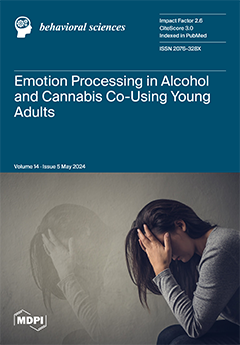Open AccessArticle
Empathy and Coping Strategies Predict Quality of Life in Japanese Healthcare Professionals
by
Kotaro Shoji, Norihito Noguchi, Fumiko Waki, Taku Saito, Masato Kitano, Naoki Edo, Minori Koga, Hiroyuki Toda, Nobuhisa Kobayashi, Takehito Sawamura and Masanori Nagamine
Cited by 9 | Viewed by 4444
Abstract
Burnout and secondary traumatic stress (STS), also referred to as compassion fatigue, are undeniable negative consequences experienced by healthcare professionals when working with patients. As frontline healthcare professionals are essential to communities, it is crucial to understand their mental health and how they
[...] Read more.
Burnout and secondary traumatic stress (STS), also referred to as compassion fatigue, are undeniable negative consequences experienced by healthcare professionals when working with patients. As frontline healthcare professionals are essential to communities, it is crucial to understand their mental health and how they cope with negative psychological responses. This study investigated the relationships between burnout, STS, compassion satisfaction, dispositional empathy, and stress management among Japanese healthcare professionals and students taking care of patients in clinical practice. The participants were 506 Japanese healthcare professionals and students (doctors, nurses, medical students, and nursing students) affiliated with Japanese Ministry of Defense Hospitals. The data were collected from March 2020 to May 2021. We assessed burnout, STS, and compassion satisfaction using the Professional Quality of Life Scale, dispositional empathy using the Interpersonal Reactivity Index, and coping with stress using the Coping Orientation to Problems Experienced Inventory (Brief-COPE). Exploratory factor analysis of the Brief-COPE yielded three factors: active coping; support-seeking; and indirect coping. Personal distress, a self-oriented emotional empathy index, was related to higher burnout and STS scores and lower compassion satisfaction. Empathic concern, an other-oriented emotional empathy index, was associated with lower burnout and higher compassion satisfaction. Active coping strategies were associated with lower burnout and higher compassion satisfaction, whereas indirect coping strategies were associated with higher burnout and STS scores. In a comparison of empathy in professional categories, nurses presented higher personal distress than nursing students, and medical doctors showed lower fantasy tendencies than medical students. These results imply the complex relationships between empathy, coping strategies, and psychological responses among healthcare professionals. Further longitudinal study is needed to explore these complex relationships and to develop more precise and effective psycho-educational interventions to prevent burnout and STS.
Full article
►▼
Show Figures






